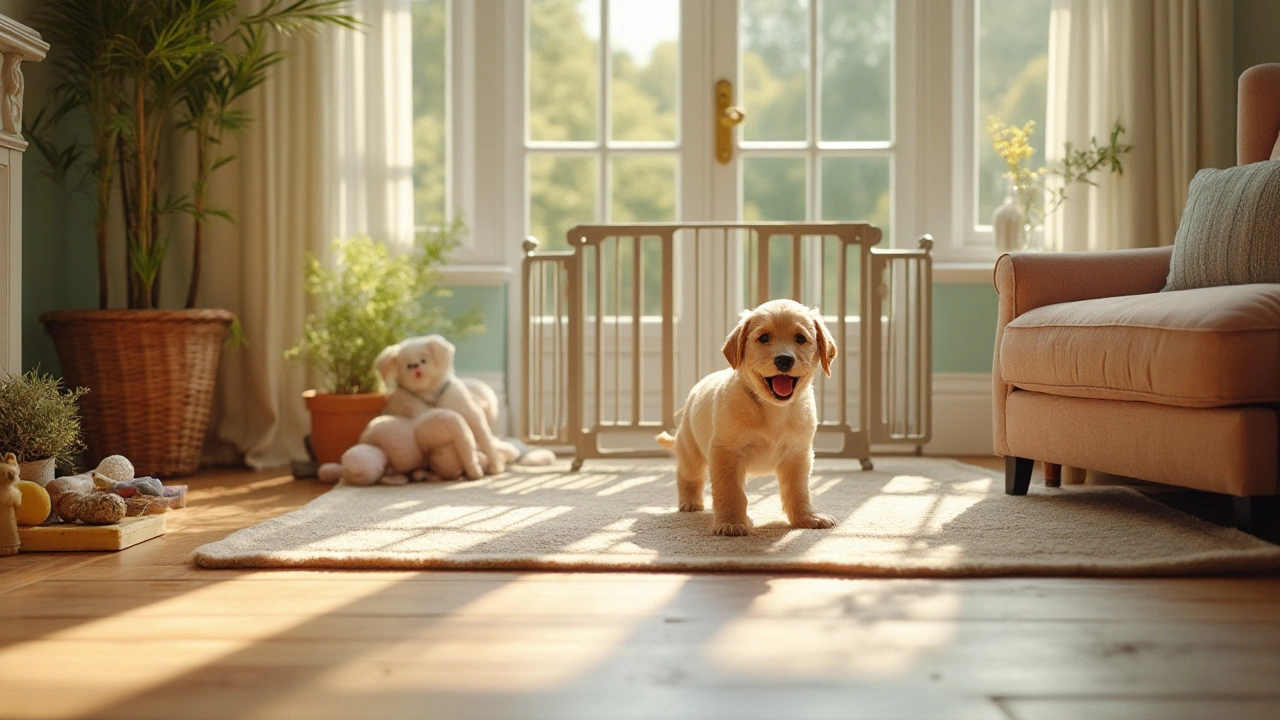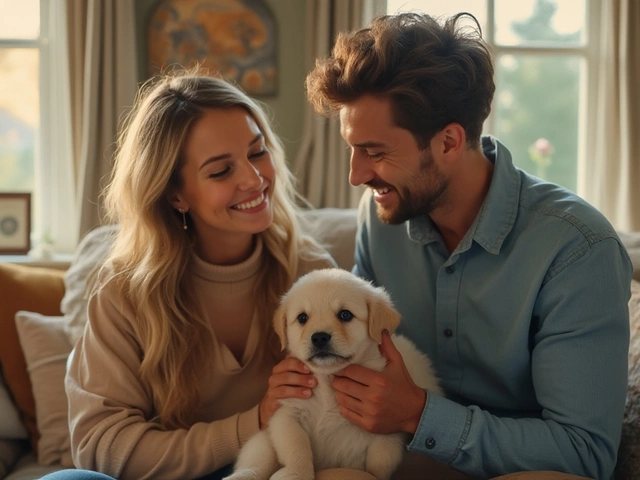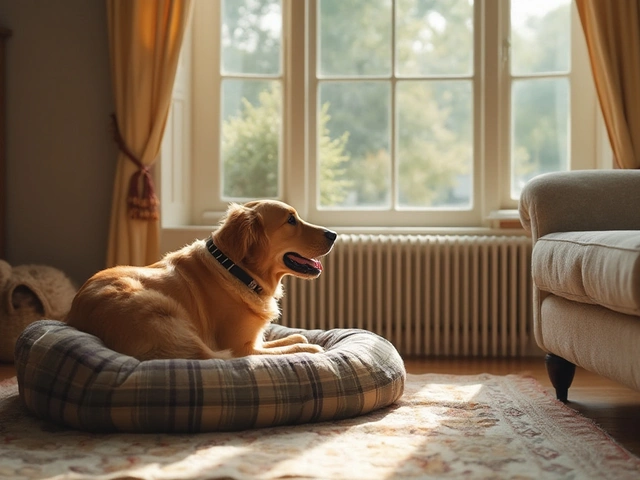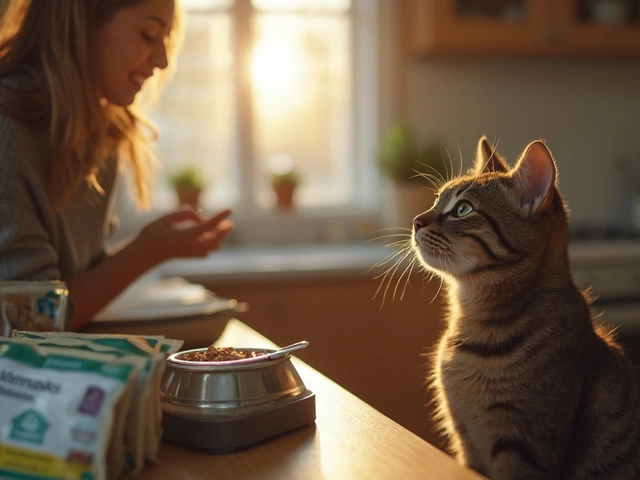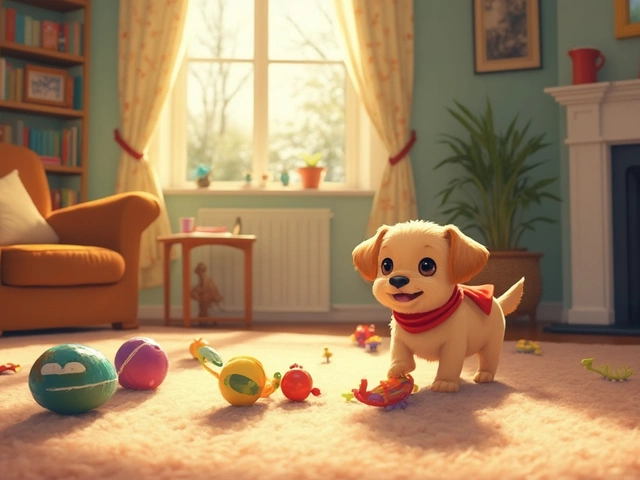Bringing a new puppy into your home is an exciting time full of joy, love, and the occasional chewed shoe. One of the pressing questions faced by pet owners is whether to grant their new furry friend the freedom to roam around the house.
Allowing your puppy to explore comes with its own set of challenges and rewards. On one hand, giving them space helps to nurture their confidence and curiosity, vital traits for any growing pup. However, letting them wander through every room unsupervised might lead to some unexpected adventures and not the good kind. It is about finding that sweet spot between freedom and safety.
To arrive at the best decision, understanding your puppy's natural behavior and how to safely integrate them into your home becomes the foundation of harmonious cohabitation. Balancing freedom with safety is not just about pet-proofing; it’s about encouraging the right habits from the get-go, ensuring a happy relationship with your little companion.
- Understanding Puppy Behavior
- Safety Concerns and Precautions
- Benefits of Controlled Freedom
- Tips for Successful Home Training
- Gradual Introduction to Roaming
Understanding Puppy Behavior
Anyone who has ever welcomed a puppy into their home can attest to the whirlwind of energy, curiosity, and mischief these little furballs bring. Understanding puppy behavior is key to ensuring that your home remains intact, and more importantly, that your new friend grows up happy and healthy. Puppies, particularly from eight weeks old to about six months, are highly impressionable. This period is crucial for learning and socialization. A puppy's world is dictated by their instincts to explore, chew, and interact with their environment. It's through this interaction that they learn about safety, trust, and social structures, not just with humans but within their own little packs, be it other animals or fellow puppies.
The chewing phase is often a source of frustration for many pet owners, but it's worth noting that chewing is as essential to puppies as breathing. It aids in teething and serves as stress relief, akin to how a hot cup of tea unwinds us after a long day. During these critical months, a structured training regimen that introduces boundaries without stifling their inherent curiosity is paramount. Allowing a puppy the space to explore can help deepen the bond between pet and owner, crafting a relationship built on mutual respect rather than intimidation or fear.
“Dogs do speak, but only to those who know how to listen.” – Orhan PamukAnother fascinating aspect of puppy behavior is their unique way of communicating. With no spoken language, puppies rely on a myriad spectrum of barks, whines, and body language signals to communicate with their human counterparts. Recognizing cues such as wagging tails – often signaling excitement or comfort – or lowered ears, which might suggest anxiety or fear, is essential in addressing their needs. Puppies also have an incredibly acute sense of smell – 10,000 to 100,000 times more sensitive than humans, depending on the breed. The world is primarily explored through scents they encounter, and this concept extends to their interactions at home as they greet each floor, corner, and scent-laden furniture piece.
Acclimating a puppy to a household environment also depends on understanding their natural instincts like territoriality and the need for mental stimulation. The concept of territory is deeply ingrained within a puppy’s DNA, and allowing them to define their space within the home can foster a sense of security and comfort. Toy-based stimulants and puzzle games can work wonders for puppies whose minds brim with activity, challenging them and preventing untoward behavior bourne out of boredom.
Indeed, every breed and individual dog has its own quirks, personalities, and tendencies. A Labrador Retriever, often known for its exuberant approach to life, might require a vastly different training approach compared to a more stoic breed like a Mastiff. Therefore, part of understanding puppy behavior is learning to adapt to the unique personality and needs of your specific dog. Observing their interactions with objects, people, and other animals provides insight into crafting a home they feel they belong to, one where they can roam while nurtured safely.
Safety Concerns and Precautions
Ensuring your home is safe for your curious puppy is a thoughtful journey that can prevent potential misadventures. Puppies, by nature, are inquisitive creatures with a knack for getting into everything. The first step in safeguarding their freedom is to puppy-proof each room. Start by securing electrical cords and outlets, as chewed wires are a common danger. Concealing these hazards with covers or cord organizers can prevent accidents and protect both your pet and your electronic devices.
Another significant concern is household chemicals and medications. Keeping these substances out of reach in high cupboards or locked cabinets is crucial. Everyday items like cleaning supplies, laundry detergents, and even some plants can pose toxicity risks if ingested. Introducing barriers such as baby gates can restrict access to areas where these items are stored. Make sure to regularly check for potential hazards as your puppy grows and changes its level of interaction with its environment.
It's important to remember the importance of physical barriers not just for hazardous items, but also for areas of your home that might cause injury. Stairs, for instance, can be daunting for a young puppy with tiny legs, and falls can result in serious injury. Puppy gates at both the top and bottom of the stairs can offer much-needed protection until your pet is more physically developed. Experienced dog trainer John Smith advises, "Setting up these boundaries early on facilitates better control over your pet's exploration habits."
Dietary risks are also a consideration. Puppies are notorious for gnawing on anything that piques their interest, including items that might look like food but aren't meant for consumption. Items like small children's toys, socks, or even jewelry should be kept off the floor and out of reach. Choking hazards can be avoided by diligently picking up potentially dangerous items and providing designated chew toys that are safe for your puppy.
The importance of a safe, designated sleeping area cannot be overstated. Creating a cozy corner with a plush bed, where your puppy feels secure, reinforces positive routines. This area should be free from small, swallowable objects and away from drafts. Research from the American Kennel Club indicates that a safe haven contributes significantly to a puppy's comfort and reduces anxiety in a new environment.
Lastly, special attention should be paid to potential escape routes. Curious puppies may squeeze through tight spots that an adult dog couldn't. Inspect your garden or yard for loose fence panels or gaps that need mending. Inside the house, ensure windows and doors are securely shut to prevent adventurous escape attempts. A dog's home environment reflects on its behavior and discipline, making precautionary measures as much about creating a safe space as nurturing healthy habits.
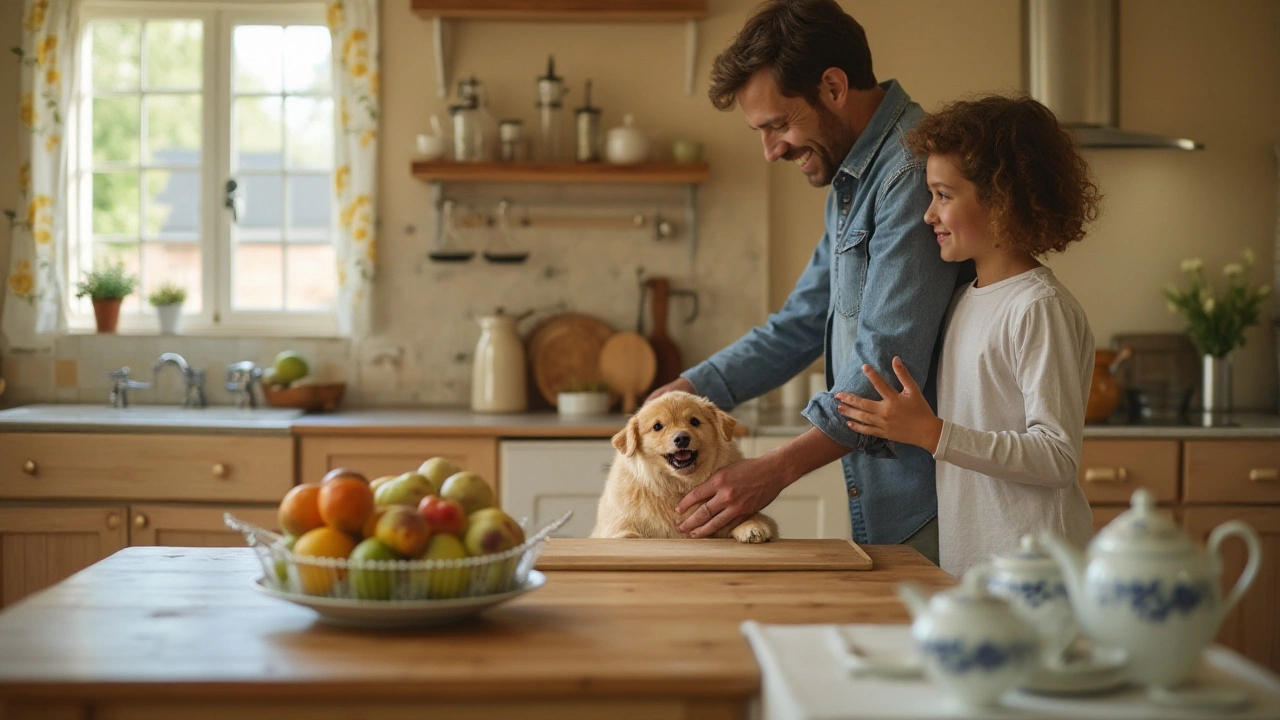
Benefits of Controlled Freedom
Giving your puppy a taste of freedom in a controlled manner is akin to granting a child gradual independence. When structured correctly, it helps in shaping a well-rounded and confident dog. At its core, controlled freedom is about striking a balance between allowing puppies to explore their surroundings while establishing boundaries to keep them safe.
The most apparent benefit of this strategy is that it offers your puppy room to develop crucial skills such as self-confidence and independence. Exploring new environments can stimulate their senses, leading to enhanced mental stimulation. The smells, sights, and sounds within the different rooms of your home provide a richer, fuller sensory experience, making these tiny adventurers more accustomed to change and less fearful of new surroundings.
Moreover, controlled freedom often leads to better behavior. It allows puppies to learn which areas are off-limits and fosters better understanding of household rules. When a puppy recognizes boundaries, they are less likely to develop destructive behaviors like chewing furniture or digging relentlessly. Puppies allowed to explore in a guided manner are more aware of what behavior is expected from them, leading to a harmonious household experience.
Building Trust and Communication
As your puppy learns the lay of the land, an invisible bridge of trust and communication begins to form between you and your furry companion. By guiding them gently rather than restricting their instincts entirely, they understand that you are there to lead and protect them, not simply to enforce rules. This trust becomes foundational as you train and socialize them for other experiences outside the home.
"Dogs thrive on structure, exploration, and routine. Letting them safely explore the home under your guidance is one of the first lessons in mutual respect," says Dr. Emily Hart, renowned veterinarian and animal behaviorist.
It is also essential to mention that a sense of control for pet owners is reassured in this method. You're not leaving things to chance as you'd have with unrestricted roaming. Starting with smaller, safe spaces, you can gradually expand their freedom as they show readiness and maintain good behavior. This gives you peace of mind that your puppy is both happy and secure.
This careful allowance eventually leads to a well-socialized dog, capable of interacting positively with new people and environments. Anecdotal evidence from experienced dog owners often points to the fact that dogs given controlled freedom during their formative years are significantly better behaved as adults compared to their overly restricted or completely unmanaged counterparts.
Tips for Successful Home Training
Training your puppy to become a well-mannered member of your household is a journey that blends patience, consistency, and positive reinforcement. Puppies are like little sponges; they absorb everything, which makes this a prime time to instill positive behaviors. The goal is to strike a balance between setting boundaries and allowing exploration. Start by establishing designated areas in the home where your pup can roam freely. Crate training is an excellent tool in this regard, providing a secure haven for your pup to relax and feel safe. The crate becomes a den - a natural instinct for dogs - rather than a place of confinement. Use positive reinforcement by rewarding your puppy each time they enter the crate willingly. This association of safety and reward encourages them to respect this space as a personal haven.
Structured routines provide your puppy with a sense of security and anticipation and help curb unwanted behaviors. Establish regular feeding, playtime, and potty schedules. You’ll notice patterns in their behavior, such as needing to go outside after meals or play sessions. These routines provide a level of predictability that helps them understand expectations. Adjusting your household’s rhythm to accommodate your puppy’s needs might seem like an effort but builds a strong foundation for successful training. The importance of consistency in commands cannot be stressed enough. Puppies thrive on clarity, and conflicting commands only serve to confuse them. If you use 'sit' for encouraging them to sit down, stick with that term. Mixing commands might lead to slower progress, and would be unfair to your puppy. Engaging the entire household in training helps enforce this consistency. Everyone should use the same set of commands, creating a uniform language your puppy can understand.
During training, consider using specific training methods like clicker training to reinforce positive behavior. The clicker acts as a marker signal for a behavior, immediately followed by a treat as a reward. This method has been proven to speed up the learning process for many dogs by creating a clear association between the desired action and a reward. Remember to keep training sessions short, no longer than 10-15 minutes at a time, as puppies have limited attention spans. Repetition is key, but it's important to prevent any frustration from escalating during these sessions.
According to renowned dog behaviorist Victoria Stilwell: "Positive training enriches not only the human-canine bond but also enhances the communication we have with our dogs."
It's equally important to puppy-proof your home to make the training successful. Move anything dangerous or valuable out of reach, ensuring that your puppy's primary spaces are both safe and stimulating. Provide plenty of chew toys to deter your pup from nibbling on furniture legs or shoes; this satisfies their natural urge to chew while protecting your belongings. Behavioral reinforcement extends beyond simple commands. It involves guiding your puppy to make the right choices about which items to engage with. Offering alternatives turns potential transgressions into opportunities for positive training. Here’s a small checklist to get started:
- Secure loose wires and electrical cords.
- Remove small objects that pose a choking hazard.
- Use baby gates to restrict access to off-limits areas.
- Provide chew toys to occupy their time.
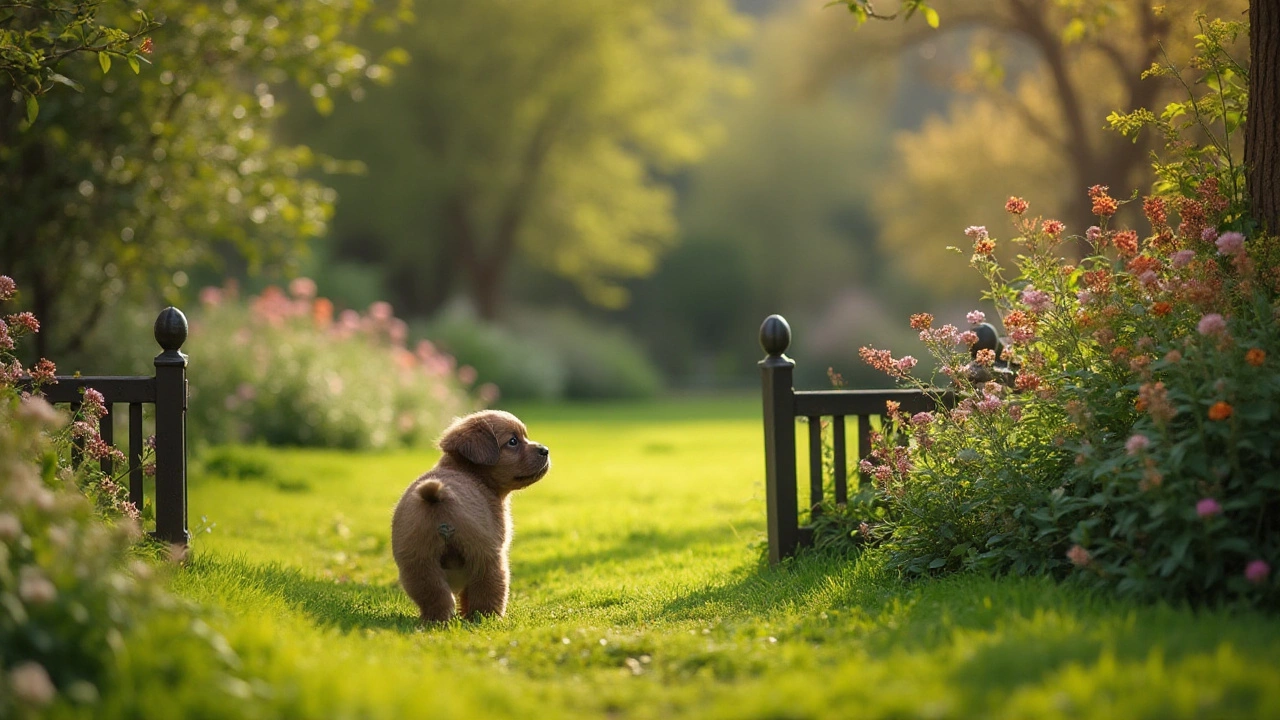
Gradual Introduction to Roaming
Gradually introducing your puppy to more areas of your home is a process requiring patience and astute observation. Puppies, with their burgeoning curiosity and unrestrained energy, are not only adorable but also relentless explorers. Much like a young toddler, your puppy benefits greatly from a step-by-step approach as they learn to navigate their new world. This method helps ensure that they can fully experience the freedom of your home while staying safe and fostering good behavior. The key lies in starting small, perhaps confining your puppy to a single room or a specific area. This allows them to become familiar with their surroundings without feeling overwhelmed. You can gradually expand their range as they show signs of maturity and understanding of basic commands. Consistency in this practice helps them associate each new freedom with the already established boundaries, building a sense of trust and balance which is crucial for your home training efforts.
As you embark on this adventure, it’s essential to remain vigilant about potential hazards, transforming new areas into safe spaces for your puppy’s exploration. Look for hazards that might be overlooked—a trailing cord, a loose shelf, tempting nooks for curious noses to investigate. Making mental notes and regularly surveying each room can prevent mishaps before they happen. Such proactive steps might also include securing fragile items or ensuring that areas like the kitchen are well-protected from little paws ready to explore everything edible in sight. An interesting statistic to consider: according to a survey by the RSPCA, nearly 60% of new puppy owners underestimate the time commitment required for safe puppy-proofing their homes, emphasizing how crucial this step is in avoiding accidental injuries.
During this gradual introduction, it’s important to use positive reinforcement to encourage good behavior and ensure your puppy associates freedom with positive experiences. Treats, praises, and perhaps a favorite toy can go a long way in making this process enjoyable and effective. Consistency in your responses to their behavior helps them learn what’s expected and makes them more comfortable with their own independence. It's crucial to observe how they react to new spaces—are they anxious or overexcited? Each puppy is different, and adapting your approach to suit their unique personality will help smooth this transition. Remember, the goal is to create a sense of balance between exploration and safety, shaping a well-adjusted pet that feels both secure and happy in their environment. As Linda Case, an expert on canine behavior, notes, "Puppies are like sponges; they absorb everything in their environment. Our job is to fill those spaces with love, guidance, and safe challenges."
Don’t forget to celebrate the milestones along this journey. Each successful step towards full home integration is a reflection of both your and your puppy’s hard work. These achievements should be cherished and rewarded, setting a nurturing tone for the continued development of your puppy within your home. Over time, these efforts promise a happy, healthy, and well-adjusted dog comfortably familiar with the terrain of its home, having gradually learned to coexist happily with its human family. With each step taken slowly and surely, both you and your puppy can grow more confidently into a home filled with both harmonious boundaries and adventurous freedom.

